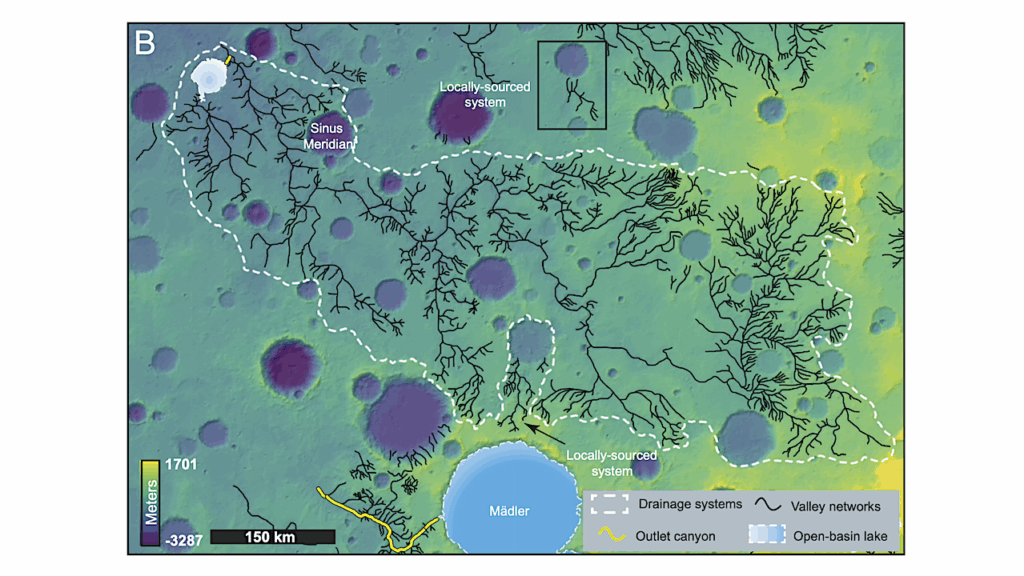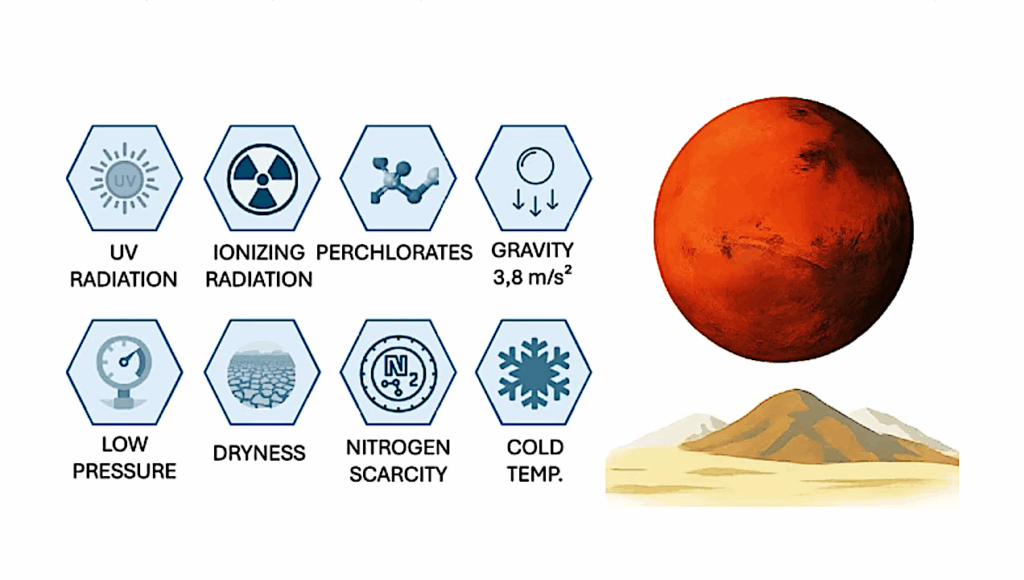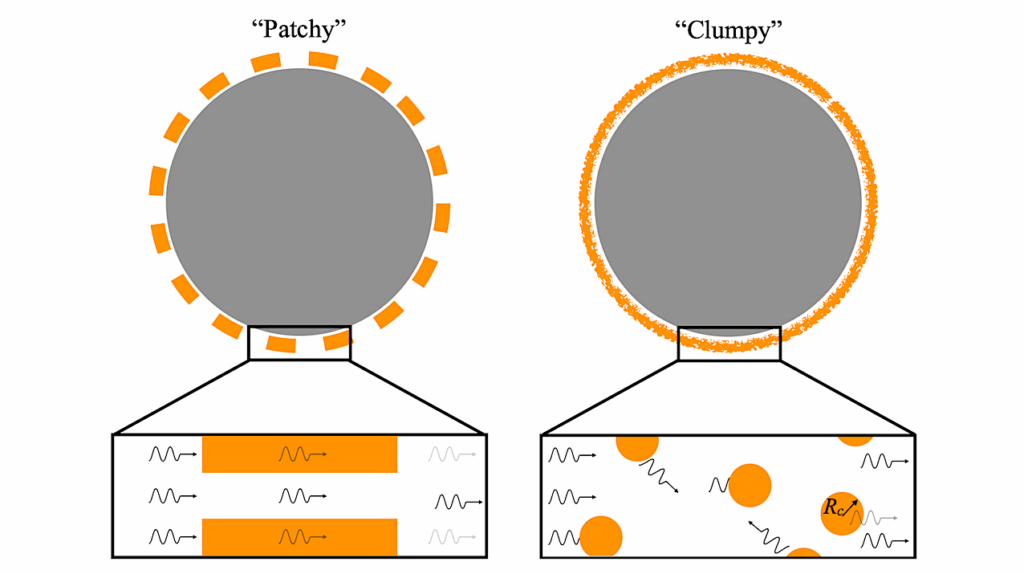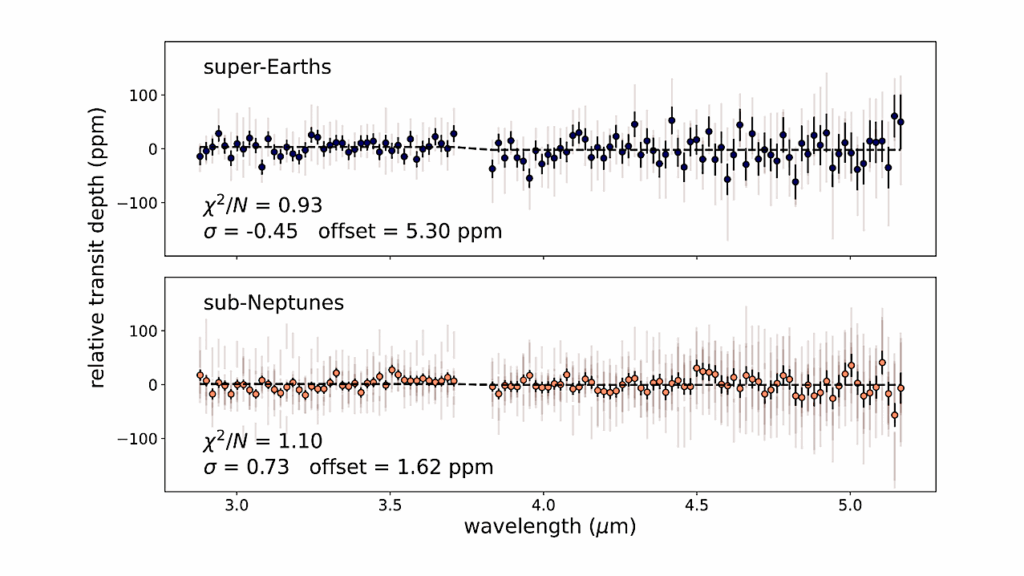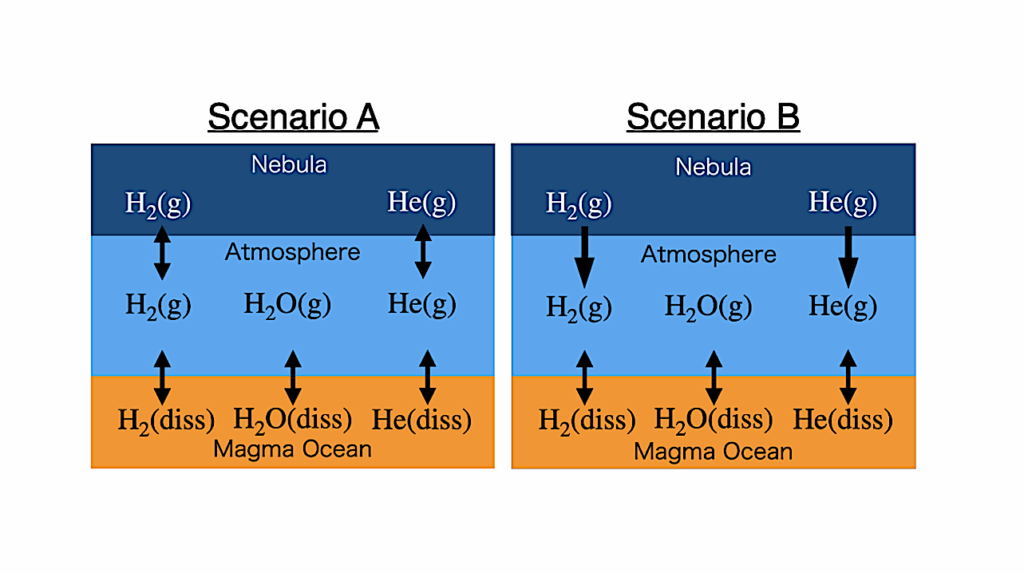The Runaway Greenhouse Effect on Hycean Worlds
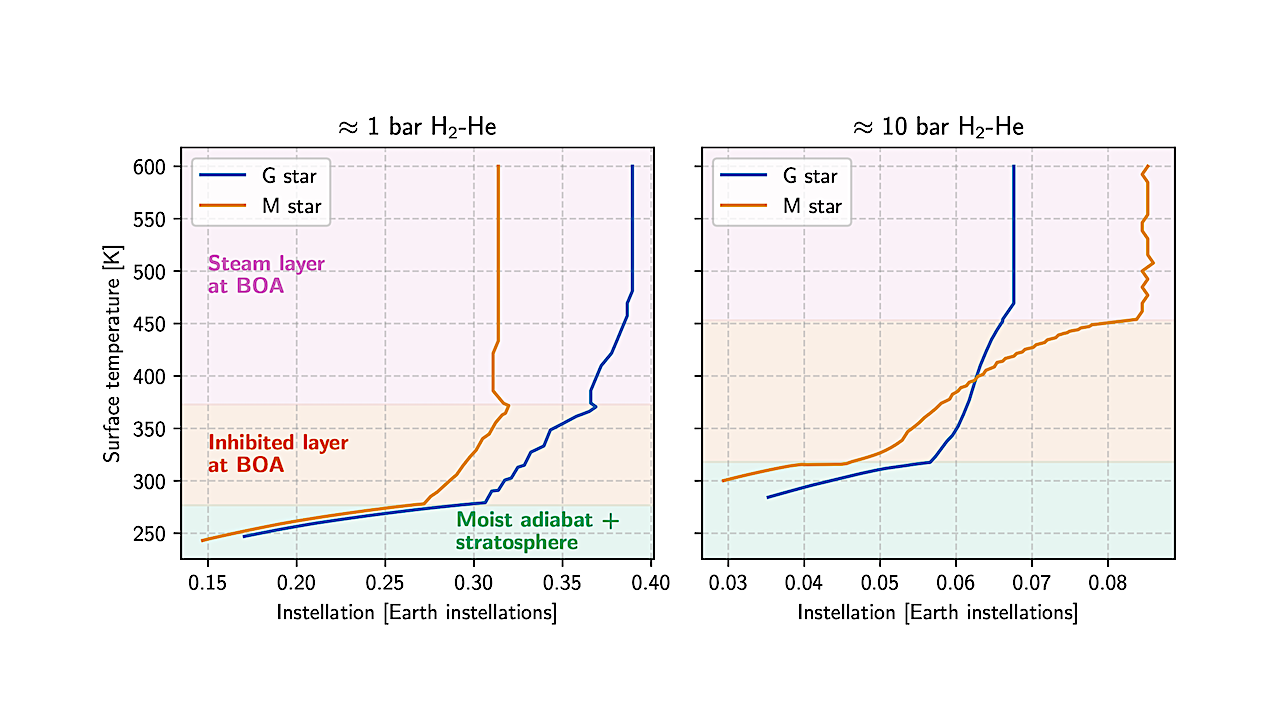
Hycean worlds are a proposed subset of sub-Neptune exoplanets with substantial water inventories, liquid surface oceans and extended hydrogen-dominated atmospheres that could be favourable for habitability.
In this work, we aim to quantitatively define the inner edge of the Hycean habitable zone using a 1D radiative-convective model. As a limiting case, we model a dry hydrogen-helium envelope above a surface ocean. We find that 10 to 20 bars of atmosphere produces enough greenhouse effect to drive a liquid surface ocean supercritical when forced with current Earth-like instellation.
Introducing water vapour into the atmosphere, we show the runaway greenhouse instellation limit is greatly reduced due to the presence of superadiabatic layers where convection is inhibited. This moves the inner edge of the habitable zone from ≈ 1 AU for a G-star to 1.6 AU (3.85 AU) for a Hycean world with a H2-He inventory of 1 bar (10 bar). For an M-star, the inner edge is equivalently moved from 0.17 AU to 0.28 AU (0.54 AU).
Our results suggest that most of the current Hycean world observational targets are not likely to sustain a liquid water ocean. We present an analytical framework for interpreting our results, finding that the maximum possible OLR scales approximately inversely with the dry mass inventory of the atmosphere.
We discuss the possible limitations of our 1D modelling and recommend the use of 3D convection-resolving models to explore the robustness of superadiabatic layers.
Hamish Innes, Shang-Min Tsai, Raymond T. Pierrehumbert
Comments: Submitted to ApJ, comments welcome
Subjects: Earth and Planetary Astrophysics (astro-ph.EP)
Cite as: arXiv:2304.02698 [astro-ph.EP] (or arXiv:2304.02698v1 [astro-ph.EP] for this version)
https://doi.org/10.48550/arXiv.2304.02698
Focus to learn more
Submission history
From: Hamish Innes
[v1] Wed, 5 Apr 2023 18:45:58 UTC (857 KB
https://arxiv.org/abs/2304.02698
Astrobiology



